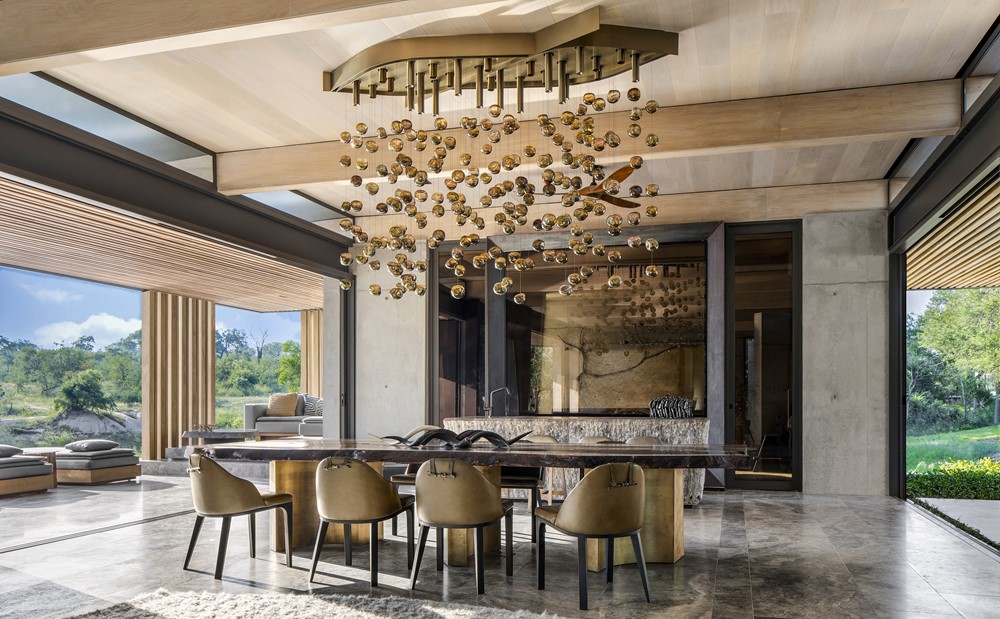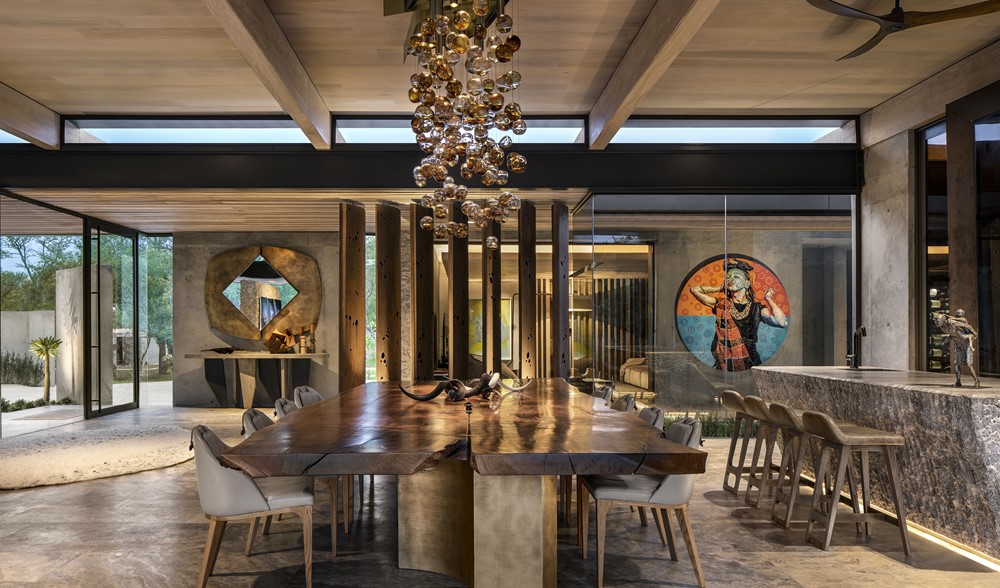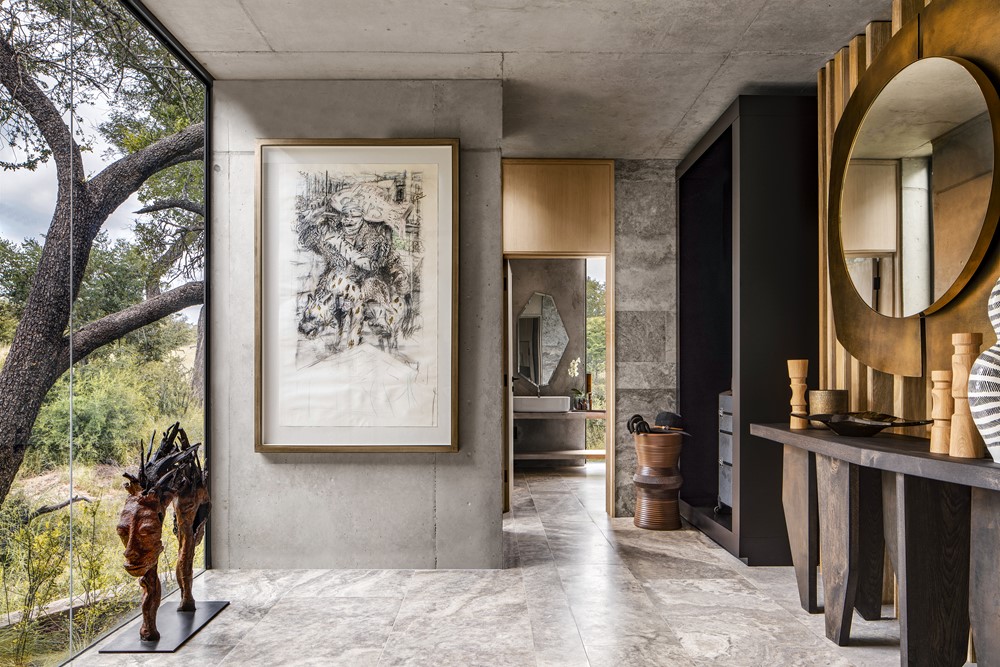OKHA created statement pieces for new luxury safari lodge, Cheetah Plains, which is set in the Sabi Sand Game Reserve. They worked in close collaboration with ARRCC (the architects and interior designers) and architect, Stefan Antoni of SAOTA. Photography by Photo: Adam Letch.
.
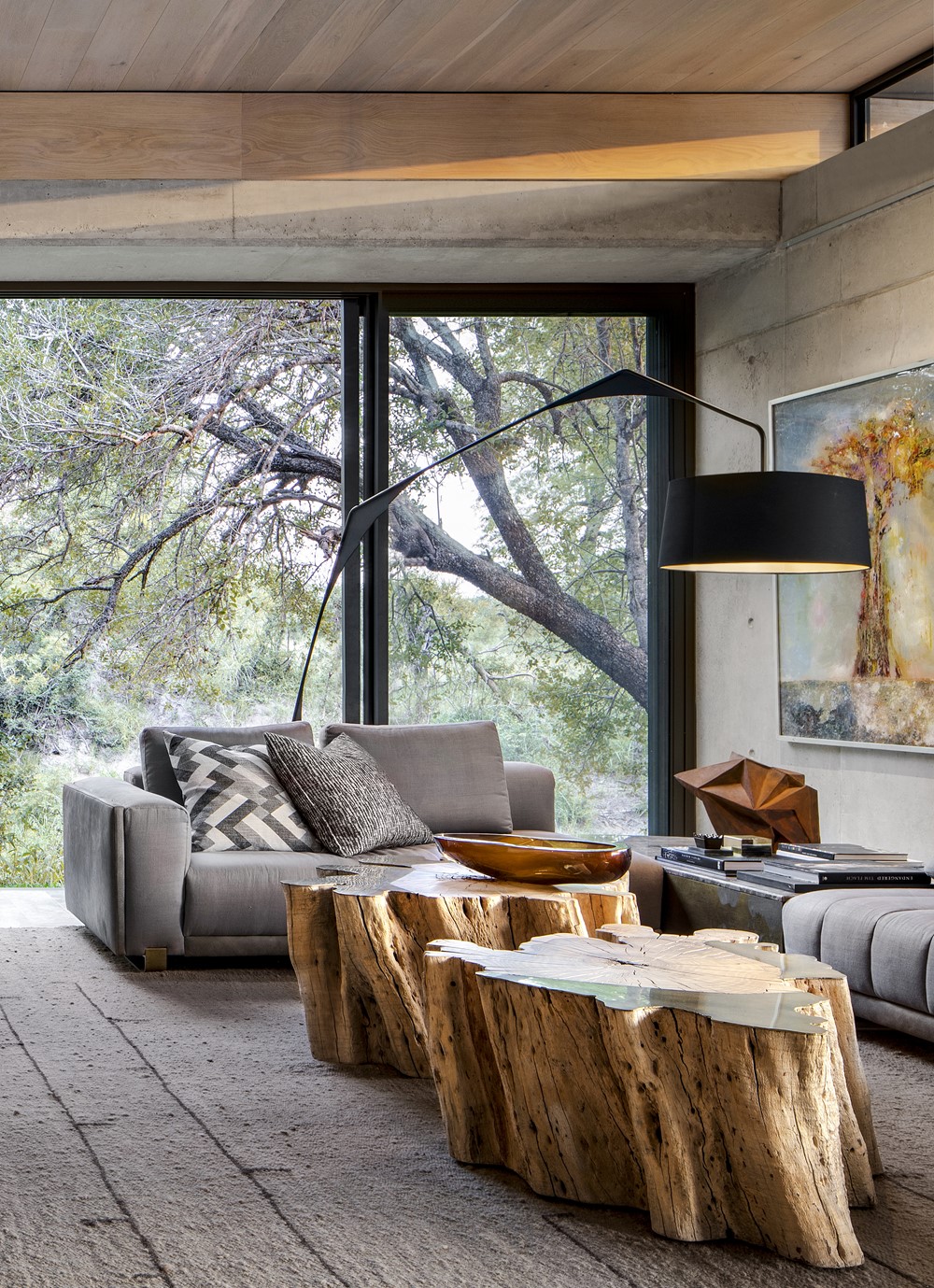
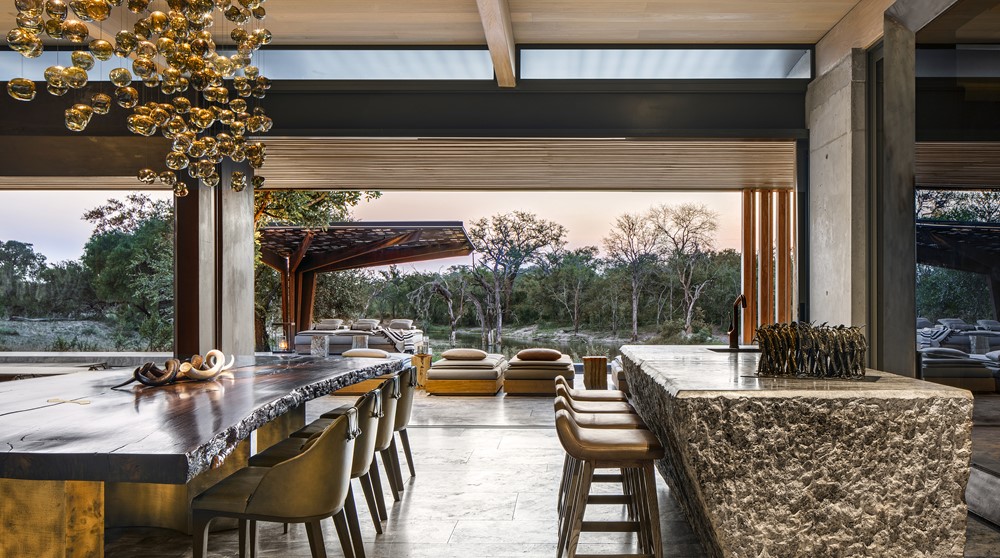
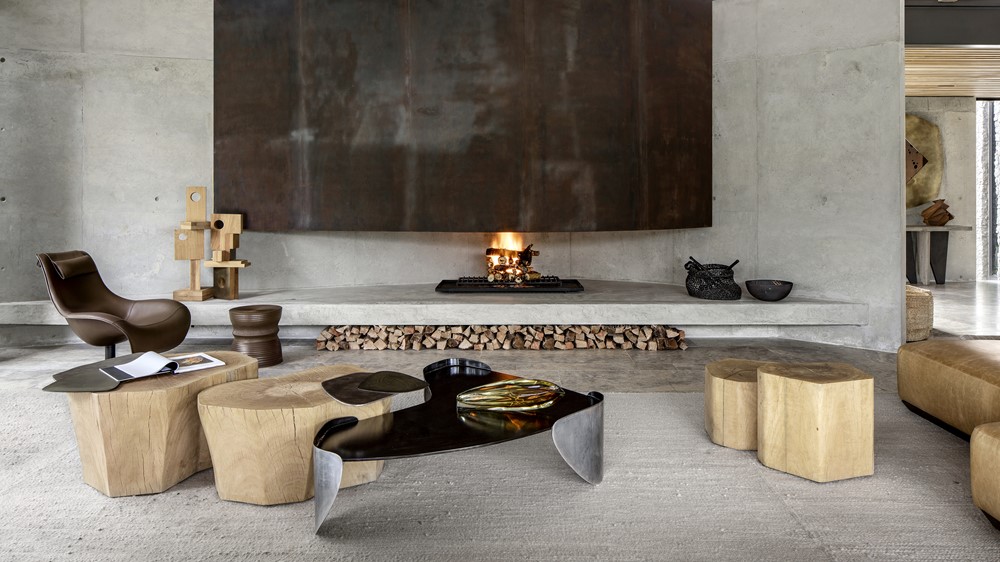
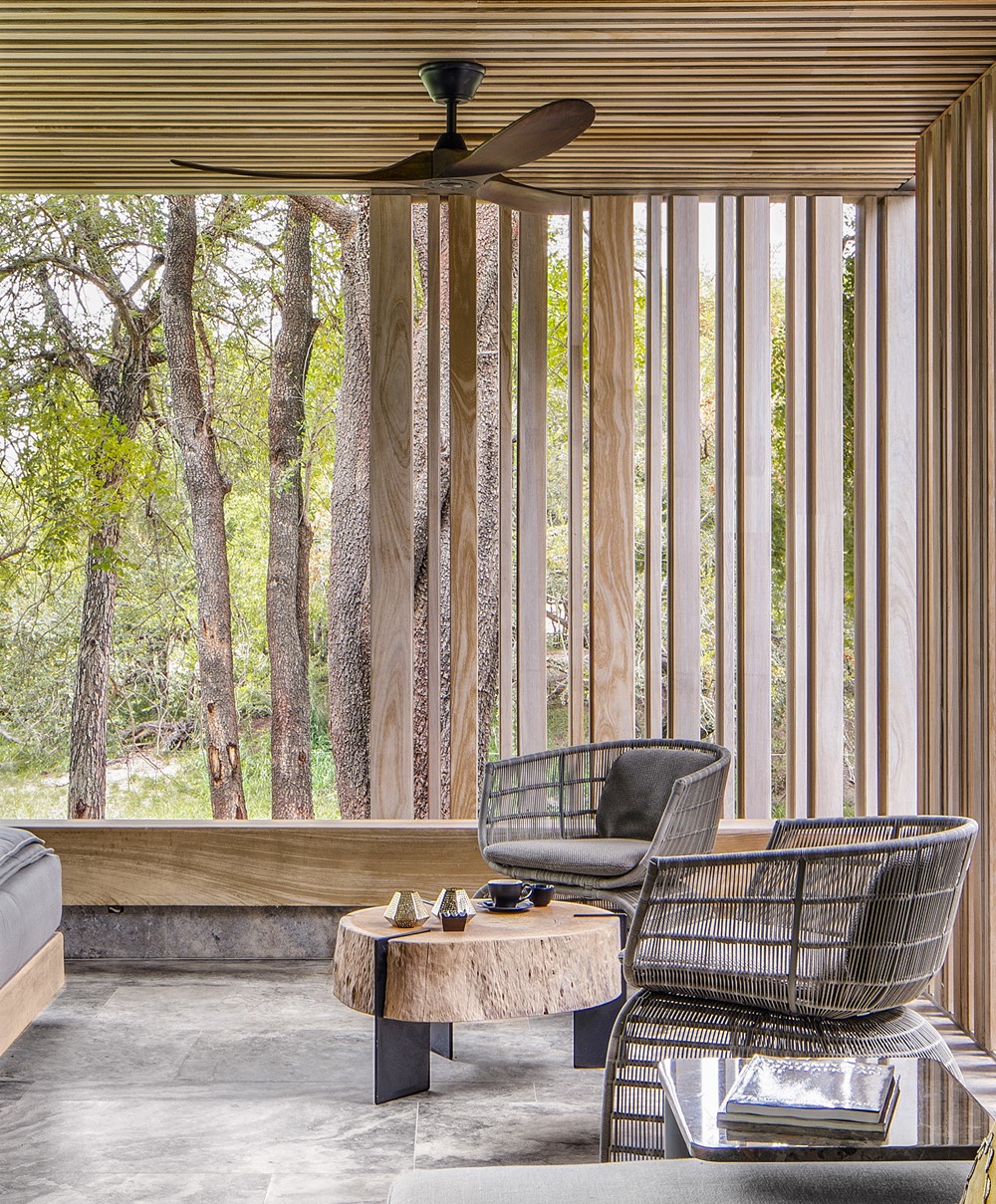
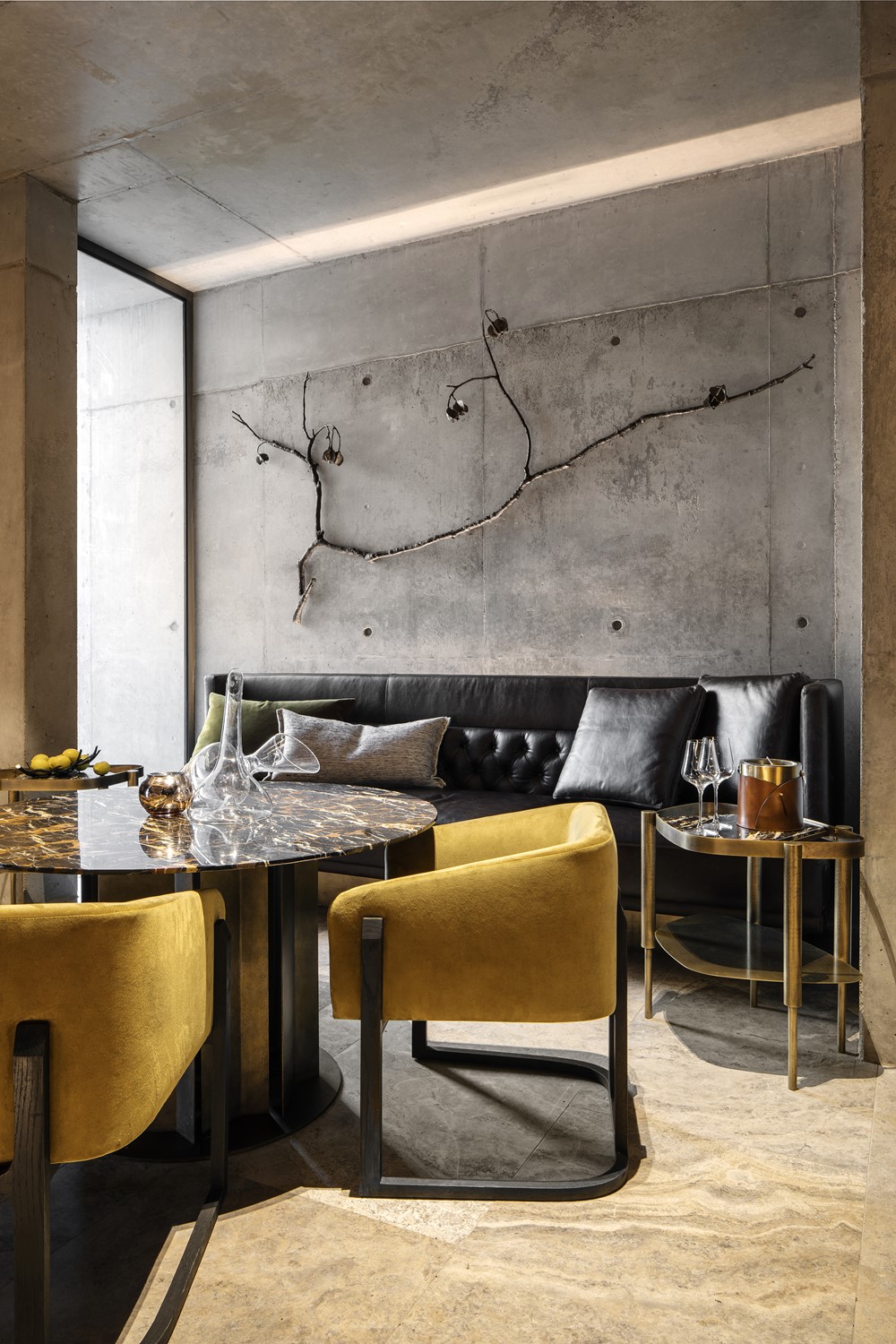
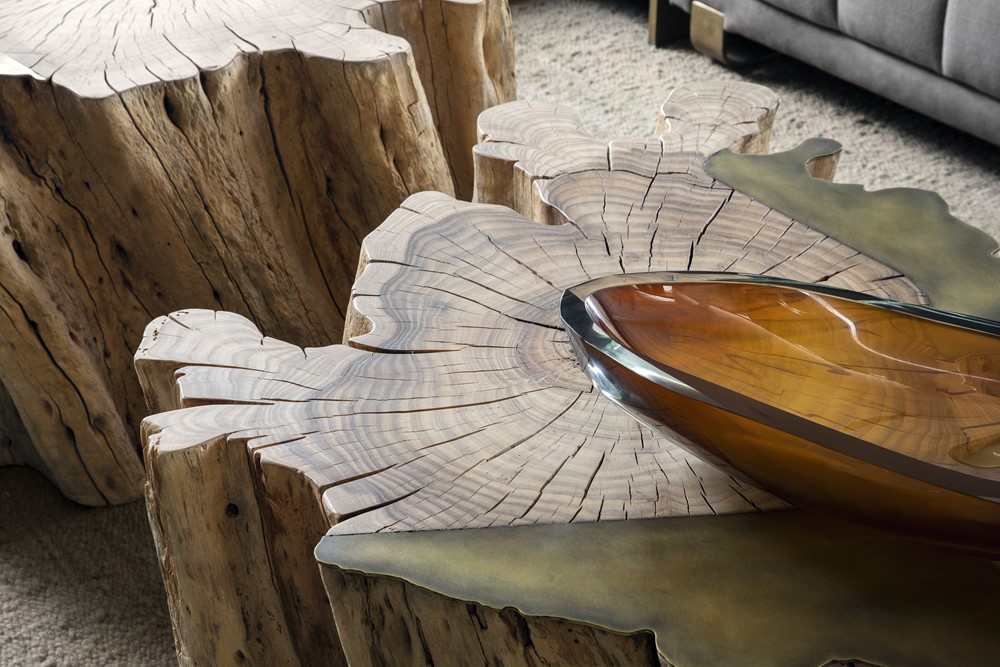
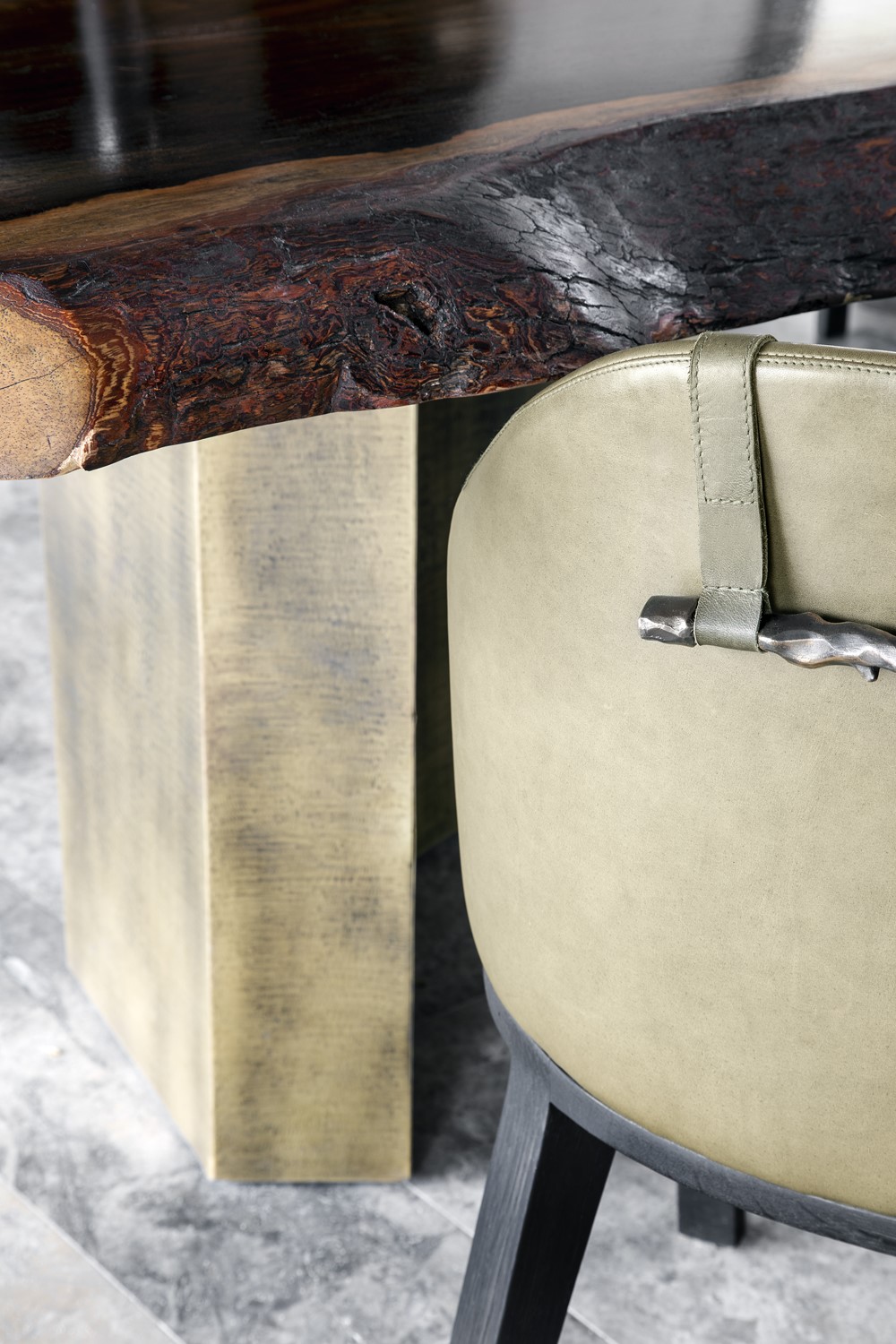

 Stefan reveals that “No matter how good architecture is, it can only succeed when the interior upholds that level of sophistication.” He feels that OKHA is able to “design furniture that upholds and mirrors the beauty of architecture”.
Stefan reveals that “No matter how good architecture is, it can only succeed when the interior upholds that level of sophistication.” He feels that OKHA is able to “design furniture that upholds and mirrors the beauty of architecture”.The project consists of three independent bush houses, named Mapogo, Mvula and Karula, each made up of several individual structures which include a central lounge, and dining room with bar area, a family media and entertainment room, a covered terrace, an open boma courtyard and separate freestanding bedroom suites. ARRCC Director Jon Case who was the lead designer for the project says that he chose to work with OKHA because of their “distinct ability to connect to a deeper narrative. They are rooted in Africa but always have their eye on an international aesthetic that is unique, and they are connected to artists and craftsmen which help to give the furniture a handcrafted feel which was so important to the overall language of Cheetah Plains.” Jon’s favourite pieces from the project are the Laguna coffee table and other bespoke coffee tables which he says, “added weight and solidity to the rooms because they are connected so well to the architectural theme.”
Working on the project over the course of 10 months, OKHA creative director Adam Court says; “We wanted to design pieces that felt like an internal landscape, using materials that have inherent value and beauty which evolve and improve over time in the same way that this process happens organically in the external landscape. We wanted to create works of stature, substance and mass with a direct physical connection to the environment of Cheetah Plains.”
Through this process, OKHA experimented with various metals and finishes exploring oxidised, patinated and etched processes on mild steel, brass and copper to create a lustre and depth that resonated with the project brief. Marble and stone were chosen according to grain and colour, and Court explains, “We went for deep rich earth tones, sienna, rust, ochre, copper, that resonated with the African bushveld.”
Fortuitously, the client was able to harvest timber from trees that had fallen naturally in the veld which were put to good use for the monumental five metre long dining tables which anchor the open plan dining area. Court explains “The table legs had to be as robust and statuesque as the tabletop, matching it in scale” To achieve this, OKHA designed a custom table leg that would physically support the one ton tops and be an elegant and appropriate design that was part of the interior narrative. Each table uses a different wood type with a unique shape, which informed the design and position of the legs. The brass clad table bases are beautifully sculpted scalloped forms that stand at opposing angles allowing the best possible seating positions and spreading the massive weight equally. The shape of the table legs was also replicated in the brass “butterfly” inlays which are recessed into the tabletop. The table is paired with custom Tofu dining chairs, upholstered with a bronze coloured leather seat and back to complement the dining table’s solid brass decals.
More bespoke elements include OKHA’s Nancy barstools in a custom metallic coloured leather, tailored brass footrest and unique wood stain, Nicci armchairs, Barnett dining chairs in a sunflower yellow velvet, Bijou marble side tables in antique brass with Nero Marquina marble tabletop, candleholders made from Iroko wood, circular copper framed mirrors with matching servers and custom life-size totems that create a completely novel atmosphere of a modern and ancient time combined. This ability to design for the environment and the architecture is a valuable contribution from OKHA.
